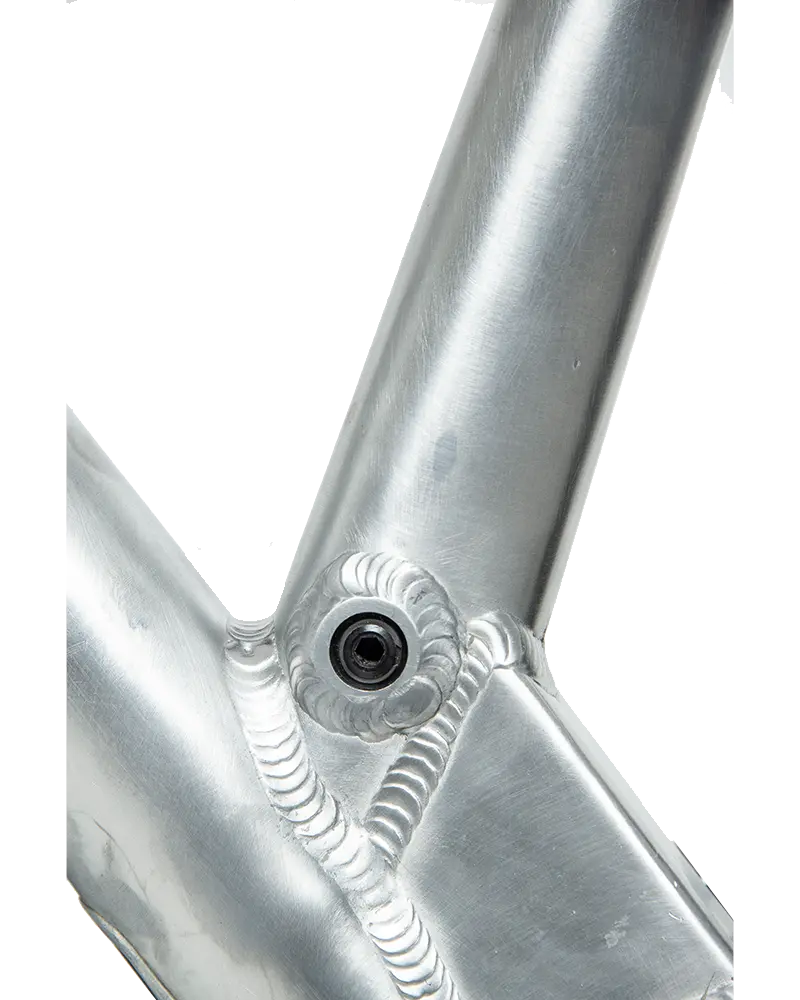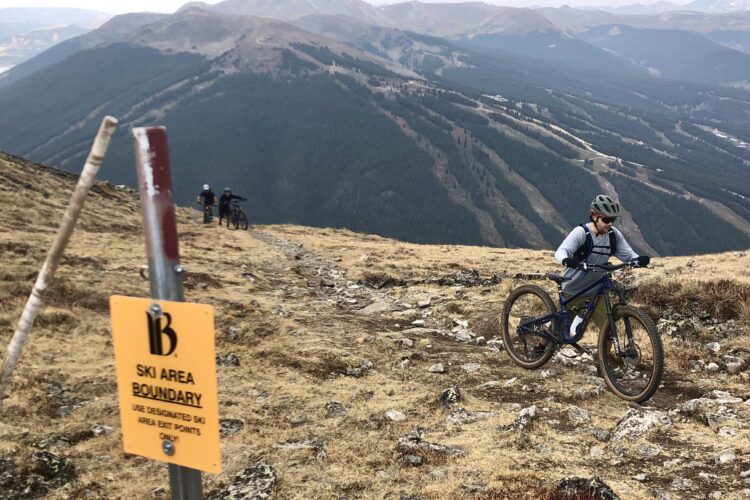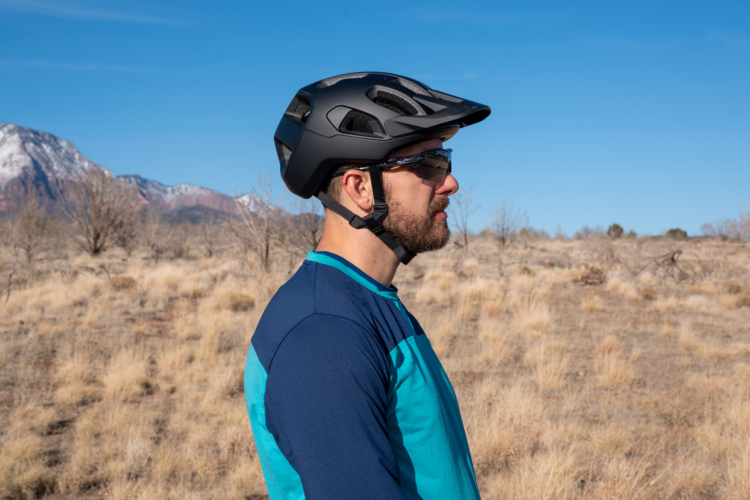
“Noodley” is perhaps the least loved word by mountain bike aficionados. As mountain bikes have become more capable, wider tubing and stiffer designs have followed. Fox released a 38mm fork as did Öhlins, and RockShox launched the Zeb in an all-out stanchion stiffening war. Frame tubing diameters became noticeably wider on mountain bikes for a stiffer chassis, and Boost spacing pushed out the old 12x142mm axle standard largely because of the said stiffness that 29ers couldn’t achieve with narrower axle spacing.
Dropper post travel has grown by inches but seat tube diameters have mostly stayed the same, and some brands say that they are at their limit with longer travel posts in 30.9mm and 31.6mm diameters.
“Everything got bigger and bigger, but the seat tube stayed the same for 20 years, and this is what actually makes sense,” said Stefan Sack, founder and CEO of BikeYoke.
BikeYoke has advocated for wider seat tube and post diameters for years. While Sack doesn’t necessarily want to push another new standard across mountain bikes, as dropper posts have grown in length, so have the challenges of making one.
“For us, it totally makes sense, you know, the 34.9[mm diameter],” he said. “Because we know how limited that space is inside the post and you have to really be careful designing the wall thickness.” Designing a reliable and well-functioning dropper post comes down to tenths of a millimeter in the walls, especially for 30.9 and 31.6mm diameters. Having “three or four millimeters more opens completely new worlds to you.”
The early days
Sack remembers his bikes from 20 years ago and how many different seat tube diameters there were. There were 27.2, 30.0, 31.2, and 31.4. Go back long enough and there are even more. As dropper posts standardized, most mountain bike brands settled on 30.9 and 31.6, although according to brands we spoke with, it’s unclear why there are two sizes that are less than a millimeter apart. For consumers transferring parts from an old frame to a new one, it’s often the only component that can’t be swapped with everything else.
BikeYoke released their first dropper post, the Revive, in early 2017, available in 30.9 and 31.6 diameters. In 2018, they released their first 34.9mm dropper post, the Revive Max with travel up to 185mm. The post was early for that diameter and at the time there weren’t many frames that could use it.
“It was a bit of a gamble,” he said. Back then, he only remembers German brand Liteville using 34.9mm seat tubes and Specialized had recently moved to 34.9 from 30.9mm on the Enduro. Evil’s long-travel 29er the Wreckoning debuted in 2016 with 34.9, and Pyga started using 34.9 on some of their models in 2017. There may have been a few others here and there, but it was still tough for BikeYoke to justify the tooling to make 34.9 dropper posts.
Near the end of 2021, more brands than ever had asked BikeYoke about their 34.9 posts. More had also asked for posts with over 200mm of drop. One, in particular, asked for samples of their longest travel, 213mm post, for a prototype, which was set to use a smaller diameter.
BikeYoke sent them sample posts to try on the prototype and asked the brand to consider using a 34.9mm seat tube on the new model and included additional samples in 34.9. Two weeks later, Sack said the brand changed its mind and would develop the new model with the wider diameter tubes.
On the inside
It’s simple to understand why lengthening posts can be problematic for the internal parts. The longer a post gets, the further the saddle gets away from the wider lower tube, and the narrower upper tube flexes more because of the added leverage. With more flexing, you’ve got a curved tube trying to insert back into a straight tube. This puts more pressure on the bushings and seals and over time, the bending may result in scratches on the internals of the outer tube.
If you’ve ever tried climbing something steep and technical with the post extended, gotten stuck with your weight over the rear wheel, and had to depress the post to dismount, you may have experienced the acute binding or stickiness in the post brought on by the bending. Dismount or place your weight directly over the saddle, and the post is happy to retreat because the upper tube has straightened out.
Thinking outside the tube
Eightpins, an Austrian dropper post manufacturer with a unique design has encountered the same issues, which is why they settled on 34.9mm, although their design asks more of the frame and can’t be used universally.



“The tube diameter is always a big issue regarding the stability or reliability of a system,” said Andreas Haimberger, cofounder of Eightpins in an interview. “We did calculations regarding the material strength and the diameter of the normal dropper seat post [where] usually the top tube of the telescopic tube has 25mm of diameter, and usually our finding was you should not make more drop than 150-170mm with that diameter. Everything else is too much stress for the system.” In order to make a stiffer system, they followed a basic engineering principle.
“The best thing to make something stronger is to increase the diameter.”
The Eightpins post does away with a traditional tube-in-tube telescopic dropper post design and instead uses the frame’s seat tube as the outer tube for an integrated seat post. Instead of the seat post clamp, an often picky component with the amount of torque it requires to secure smaller diameter posts without causing sticky action, Eightpins uses an axle through the frame at the bottom of the post to secure it.
This means Eightpins can only be used with certain frames that are designed with the post in mind; currently Rotwild, Ghost, Bulls, and Liteville. Haimberger said that they are trying to work with more frames and the integrated system is a boon for frame aesthetics.
Their shortest travel posts have 141mm of drop and an XXL post has 258mm. The travel amount on each post can be adjusted easily by unlocking the post with a hex key and the adjustable travel ranges are between 102mm and 132mm. Traditional dropper posts with adjustable travel are usually adjustable by about 30mm.
Though the system may sound complicated compared to traditional dropper posts, Haimberger sees it the other way around. On telescoping droppers, “You have a tube in a tube in a tube. From my point of view, that’s too much.”
Though changes in geometry like shorter seat tubes and lower standover heights have spurred demand for longer dropper posts, Sack and Haimberger both mentioned that bike brands have also been asking for droppers with higher weight limits because they are being specced on e-bikes and that tend to draw heavier riders, another reason why both like 34.9.
Stiffer, lighter, sexier

Widening a tube diameter generally increases the stiffness, but it can also make it lighter. Both factors were a driving force when the mountain bike industry started to use 35mm handlebars over 31.8mm.
“34.9 allows us to make a seat tube that is stiffer, lighter, and stronger, which makes a lot of sense in the categories we’re talking about,” said Theo Schapp, the mountain bike engineering manager for Specialized.
Schapp said that when Specialized started to use 34.9, they may have forecasted that droppers would get longer and would need to widen to maintain the stiffness and give product engineers more room to work with for dropper post internals. The Enduro was the first bike in their lineup to move to 34.9 in 2017. Most of their mountain bikes have moved to 34.9 following their implementation of S-sizing which kept standover height low and seat tubes short. Specialized still uses 30.9 on some of their XC bikes like the Epic and Chisel. On a frame where riders tend to use a shorter travel dropper or none at all and appreciate added compliance from a rigid post, it’s likely that the smaller diameter tubing will stick around.
Pyga Bikes implemented 34.9 this way, giving their longer travel Hyrax and Slakline bikes 34.9mm seat tubes and their shorter travel Stage and Stage Max a 30.9mm seat tube. Pyga’s Howie Zink said that they also brought 34.9 to the two bikes in 2017. Dropper posts were tougher to source at first with only a handful of options, but as time has passed, “nearly every manufacturer has one.” Pyga wanted 34.9 to incorporate stiffer, and more serviceable and durable dropper posts.
Zink added that with wider tubing happening throughout the entire frame, 34.9 kept the bikes’ aesthetics more consistent.
“However, one of the main reasons for larger diameter bars and forks is to match the aesthetics of larger tubing in frames and E-Bikes. Most of the reason for the larger diameter of many parts is to keep the aesthetic.”
In an interview with PNW Components, Todd Cannatelli said they haven’t seen any increases in consumer demand for 34.9mm dropper posts over the smaller diameters, nor have they seen differences in reliability between the smaller and larger diameter posts, though they haven’t fully evaluated reliability amongst the diameters and travel lengths. Cannatelli worked at Specialized when the brand was moving toward 34.9 before he started working at PNW.
“There’s still some digging on my end that I’d be curious to learn. Is it that, you know, people spent more time on the OE product before they make the upgrade to an aftermarket post, so there’s this sort of delayed slinky effect from the frame manufacturer to when people swap out posts for aftermarket, or how ubiquitous is the 34.9 frame beyond what I’ve seen as a product manager and marketing person previously?” Personally, Cannatelli said he likes the look of a bigger tube.






















4 Comments
Jan 19, 2022
Jan 18, 2022
Jan 22, 2022
Jan 24, 2022
People actually do this? Their first reaction to falling over is to lower their post and not put a foot down. This seems like another made up issue by the bike industry. More planned obsolesces so that they can engineer parts easier and cheaper, but without passing the saving on to the consumer.